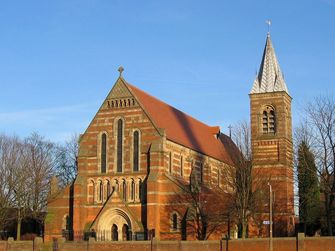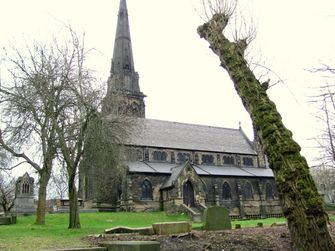The two Manchester business men, Herbert and Shaw (later Shaw and Son), had one of the most impressively ornate warehouses on Whitworth Street. Code stone fronted, with their names inscribed on the foundation stone by the huge gates at the entrance, it was greatly admired.
Partners since their early youth, they shared a vision for scientific advancement, pioneering engineering for the railways and later investing their capital in strong, successful ventures.
To have them on a Board was seen as a prize for any company and they were well known figures attending the Exchanges. They lived in high style at mansions in Victoria Park and their families dined together regularly.
With a son on one side and a daughter on the other, there had always been an expectation of betrothal and marriage in time, leading to a fruitful future for the two families.
The young couple themselves, being long familiar, were cordial enough together. He was happy to peruse her decoupage scrapbooks and present her with posies in the language of flowers, which could be pressed, with a verse penned sweetly alongside, and she seemed happy to pay due respect to his conversation when he called.
Each family had a group photograph of the other framed on their mantel, observing them graciously at their firesides.
Mr Shaw had his son to act as secretary but there came a day for Mr Herbert, his own old servant having retired, when he found the chaos of his study too much for him. He needed, he was advised, an amanuensis to organise him and having only a daughter, was forced to advertise for a professional person.
After some consideration, a young man was settled upon, who came with an excellent letter of introduction, although some observed that he had an air about him which suggested he did not quite know his place.
He was deft of manner, however, and being efficient and amusing in the right kind of way for a man without a son, was quickly a familiar figure around Mr Herbert. He was the kind of person, though not a striking physical presence, who made people aware of him and so he was soon included in the conversation of any company they were in.
Mr Shaw junior, who certainly did know his place, took little notice of this lower order when he visited and so missed the signs of a growing influence.
It was around this time that Mr Herbert became consumed with a new passion for the fashion of the day, making his mark on the world by building a church for the growing populous of the manufacturing districts. They were springing up everywhere, these church towers, changing the city from classical to gothic and modernising its skyline.
As with other aspirant spire builders at that time, Mr Herbert's design bible was "The Directorium Anglicanum", an instruction manual for worship. He spent many a happy hour pouring over it with the amanuensis and his study became filled with ecclesiastical catalogues for internal furnishings.
His talk was of nothing but this project and his church was to have it all, vestry, chancel and a platform for the choir. This being an adventure on his own, though, it caused the banked down embers of competition with his business partner, to first glow and then spark into life.
Was not Mr Shaw just as respected a gentleman, entrepreneur and benefactor as Mr Herbert? Was he not just as visionary a man to be remembered for his gift to the city?
Stung into rivalry, Mr Shaw and son soon began on their own plans for a place of worship. Sites were purchased, architects commissioned and as stones began to be dressed and churches to rise, phoenix-like, from the ashes of former loyalties, the two friends ceased to speak, each angered by the presumption of the other.
Someone, it was never remembered exactly who, suggested that the victor would be the first to ring their church bells when the construction was complete. The schism between the two men was so final that their business interests were virtually separated by now.
In the end, it was Mr Herbert who proudly rang out his church bells first and in due course, they rang again, for the wedding of his daughter and the amanuensis, who would become his heir.
The bride wore lilies in her corsage, which, as people later remarked, had not, perhaps, been the happiest of choices.
Share this page

